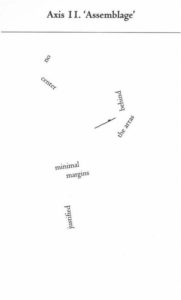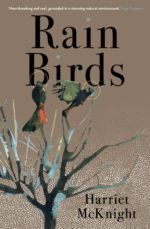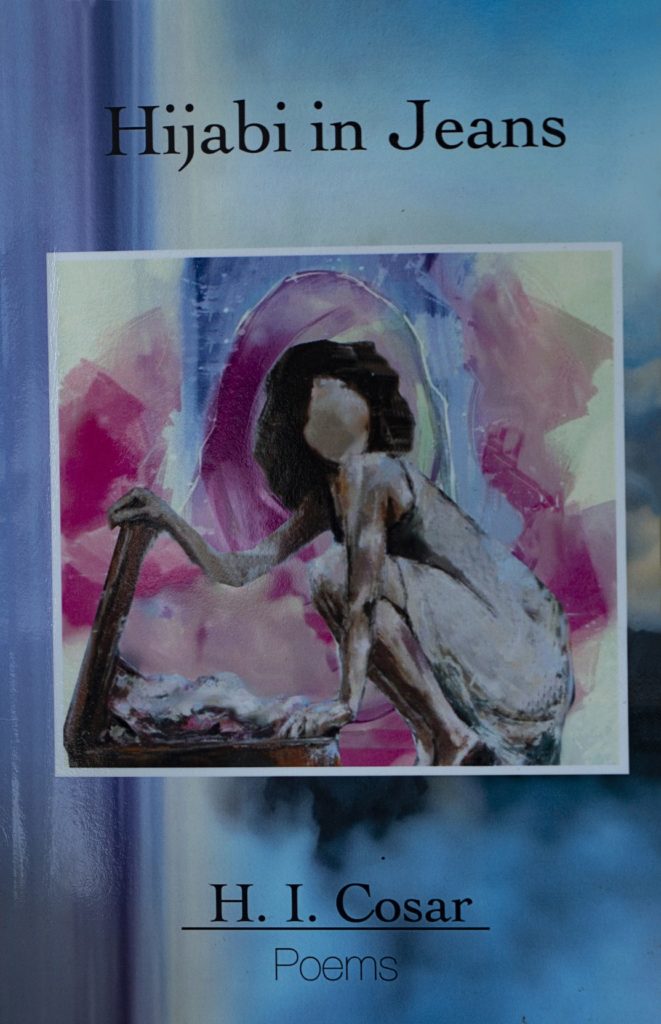Samantha Trayhurn reviews “Imminence” by Mariana Dimópulos
 Imminence
Imminence
by Mariana Dimópulos
translated by Alice Whitmore
ISBN 9781925336962
Reviewed by SAMANTHA TRAYHURN
We’re alone together, for the first time. I have to touch him now. I try stroking a foot, then a shoulder. But no current lifts in me, nothing pulls at my chest the way they said it would… (p.1).
There is something strangely refreshing about a book that opens with a mother staring down at her newborn and feeling nothing. For a woman in her thirties who does not yet have children, it is the perfect antidote to scrolling through social media and seeing countless images of my friends’ perfect babies. While not immune to the appeal of maternal joy, I am circumspect about our dominant cultural representations of motherhood. It is rare when another story is presented. And that’s just what I found in Argentine author Mariana Dimópulos’ second novel translated into English, Imminence. Here is the moment that women are so often told will be the happiest experience of their lives, flipped and presented as a stark reconfiguration. However, this isn’t just a book about becoming a mother, it is also a book about becoming a woman, and what that might mean to a narrator who bounces between the orbits of authoritative men. Through the use of surreal and abstract elements, Dimópulos also hints at what it might mean to be a woman writer. She presents a fragmented novel, layered not only by overlapping narratives, but also multiple significances.
Imminence (or Pendiente in the original Spanish) is a clever title because it suggests to readers that something is going to happen whether we like it or not. Alice Whitmore’s translation is deft not only for bringing the novel into English, but doing so with close attention to its nuanced, embedded meanings. We are pulled through the novel’s broken mirror like shards as we try to assemble a clear picture of a story that takes place on a single evening, but by memory, is dispersed across place and time. It begins with a new mother returning home from the hospital with her son after an extended illness following childbirth. How this nameless narrator came to have a son, and why she is having trouble touching him, will be unravelled in a braided story that criss-crosses between her life with current partner Ivan, her previous relationship with the intellectual Pedro, and her trysts with a domineering cousin. Along the way we will examine patterns – numerical, relational, personal – and will be confronted by recurring images that hint at unsettling correlations.
The blowfly of that other night needs shooing. Last time we ended up with a dead cat, and nobody should die today (p. 14).
Suspense is built around a box containing a cat into which our narrator drove a knife on the final night of her relationship with Pedro. As she reflects from her Buenos Aires apartment, readers are left to wonder how the cat is going to relate to the child in a thoroughly page-turning experience.
At its core, Imminence explores what it means to be a woman nearing forty who does not yet have children. The fragments trace the narrator’s life during her twenties and thirties, a time when she is strongly influenced by friends Ludmilla and Mara; two women whom she admires for their rebellious qualities.
Mara and Ludmilla didn’t have parties. They didn’t go to weddings or family gatherings, and they had sworn never to sign a piece of paper with any man. When they spoke about the future they would carefully weed out anything rose coloured: they didn’t believe in love the way most young women do (p. 24).
After Ludmilla dies, another imminent event we must wait to find out the details of, Mara surrounds herself with other childless ‘beer-drinking women’ (p. 91). However, when later in life Mara decides that she does want children after all, our narrator must move through her own process of questioning what it could mean to become a nurturer.
Kindness: some women say it grows on its own, like a weed, once you have a child. But sometimes a man is enough. Or a brother. Or a sick friend (p. 56).
Such a concept seems foreign to a woman who, in her relationships with men, is not nurturing, but heavily reliant on her own subordination.
The passivity of the central character is extremely interesting, because on the one hand she surrounds herself by strong-headed women, and in many ways considers herself to be one of them. On the other hand, she is seemingly incapable of saying no to the forceful cousin who incessantly pursues her, and always submits to the will of her partners. With Pedro:
I drank the several glasses he handed me. I did it for his sake, since I never drink… He insisted on walking, so we walked (p. 6).
Whereas with Ivan her acquiescence seems motivated by a belief that he has access to some superior source of knowledge:
He says something and then it happens. ‘The fever will go down’ he says, and the fever goes down. (p. 17)
Dimópulos paints a world that is certainly ruled by men – one in which even women who rebel are still not certain of their roles. This is clearest when Mara’s friends sit around ‘trying to understand, without centuries of literature and philosophy to orientate them, what it might mean not to be a man’ (p. 91). Therefore, when our narrator continually declares ‘I am not a woman’ (p. 5) perhaps what she is really saying is ‘I am not not a man.’ In refusing traditional feminine roles she is absorbed into masculinity; there is no liminal space for her to occupy.
The narrator’s post-natal depression is exacerbated by the fact that her child is a boy. She exhibits a large amount of distrust towards men, and often refers to repeated rejection. When Ivan leaves the room she sits
…spinning those threadbare, faithful stories that women like me cling to in the hope of forestalling the abandonment that always seems to lurk on the other side of waiting’ (p. 13).
It is unsurprising then that this woman is confronted by the fact that she must form an attachment to an infant man without knowing whether he will also hurt, deceive, or leave her. Through the narrator’s infatuation with mathematics, Imminence in many ways comments on patterns and cyclicity. We see how a woman finds comfort in numbers but can’t find a formula to solve the recurring problems of her relationships. Ultimately, it is the profoundly new experience of conceiving a child that is transformative in a way that nothing else has been.
I was a woman now… (p. 112)
When I speak, I have to be someone new (p. 113).
The traits and perspectives of this new iteration of our narrator are revealed alongside the events that have shaped them – like flowers traced down to their roots – so that by the time the novel ends, we feel a deep connection to her.
At times it is difficult to tell whether the surreal atmosphere that shrouds Dimópulos text is an intentional nod to Borges, or her own commentary on the way that all female writing that ventures into the abstract will still be absorbed into a male canon. She could also be drawing on the strangely unsettling affects created by predecessors like Norah Lange and Silvina Okampo positioning her work alongside contemporaries like Mariana Enriquez with her darkly surreal feminism. Perhaps, in allowing for multiple readings, Dimópulos embarks on a different kind of feminist protest. Imminence is not only an enthralling novel; it is a complex project that highlights the congruent struggles that exist between giving birth to a child and birthing a novel. It suggests that one seemingly can’t escape what is prescribed, but if looking for a silver lining, or the inclination to reach out and touch the ‘lustre of a silver foot’ (p.2), it is possible to rework the formula to arrive at an entirely unexpected result.
SAMANTHA TRAYHURN is a writer living on the Central Coast of NSW. Her work has appeared in Westerly, Overland, LiNQ Journal, eTropic, and others. She is currently a doctoral candidate at Western Sydney University. She is also the editor of Pink Cover Zine.
 The Burning Elephant
The Burning Elephant Autobiochemistry
Autobiochemistry AXIS Book I: ‘Areal’
AXIS Book I: ‘Areal’
 The Book of Thistles
The Book of Thistles  Rain Birds
Rain Birds Journey to Horseshoe Bend
Journey to Horseshoe Bend The Measure of Skin
The Measure of Skin
